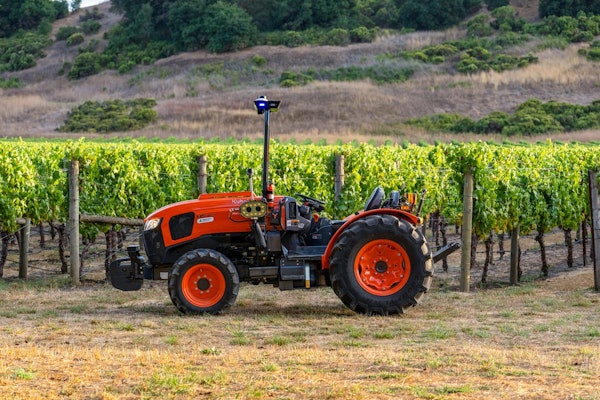Compact utility tractors (CUTs) are called “utility” machines for a specific reason, notes Mike Hilderbrand, marketing director for Mahindra U.S.A. “These are not specialized machines,” he explains. Other types of specialized equipment work well in high volume, repetitive operations. “But for small- to medium-sized landscapers, who do everything from mowing to trenching to digging fence posts to moving dirt, a multipurpose utility tractor is the most adaptable and flexible machine out there,” Hilderbrand says. “That’s why they are such a good choice given the many-varied jobs a landscaper is called upon to perform weekly.”
Generally speaking, a compact utility tractor is a smaller version of larger, agricultural grade machines. In most cases, OEMs define a compact utility tractor as producing between 20 to 50 engine horsepower.
“Utility tractors are basically the same in appearance, but have enjoyed technical advances found on larger models,” Hilderbrand notes. These advances include hydrostatic transmissions or power shuttle transmissions, improved lift hydraulics and braking systems and more ergonomic designs with an emphasis on operator safety and comfort.
Many variables affect the tractor selection process
As with larger tractors, compact utility models feature a rear-mounted power take-off (generally rated from 15 to 45 horsepower). Tractors below 40 horsepower are often equipped with an additional mid-mount PTO shaft intended to power implements such as finish mowers, snow blowers or rotary brooms.
Still, Hilderbrand cautions that horsepower, while important, isn’t the most important indicator of the suitability of a tractor for your business. “Landscapers should pay attention to things like type of engine, torque, operating weight, hydraulic system capacity, and number of forward and reverse gears when deciding which tractor to buy,” he says. “When looking at tractor horsepower, you should consider PTO horsepower instead of engine horsepower (manufacturers typically list both in their specifications), and the level of RPMs at which the engine needs to operate in order to produce the horsepower through the PTO – the lower the RPMs the better.” In addition, he says, if the tractor will include a front end loader, you should consider maximum lift height, maximum reach, maximum digging depth (below grade), lift capacity, breakout force, and the amount of time it takes to raise and lower the boom and at what engine RPM.
A PTO easily adds extra dimensions to a tractor’s usefulness on a job, but adding a quick attach hitch can dramatically decrease the time spent swapping implements out, says Tom Patterson, vice president, sales and marketing, Montana Tractors. “We offer a quick attach standard on our tractors because they are fast and easy to use,” she explains. “Combined with a quick attach, a PTO allows you to employ a wide array of implements with your tractor, including rear-mounted backhoes, a rear blades, box blades, yard rakes, post hole diggers, tillers, hydraulic lift wagons, batwing rotary cutters and finish mowers, pull cutters, tandem discs and a trencher – to name a few.”






